Flooring and staging products for tented events are getting lighter, stronger— and more beautiful.
by Jeff Moravec
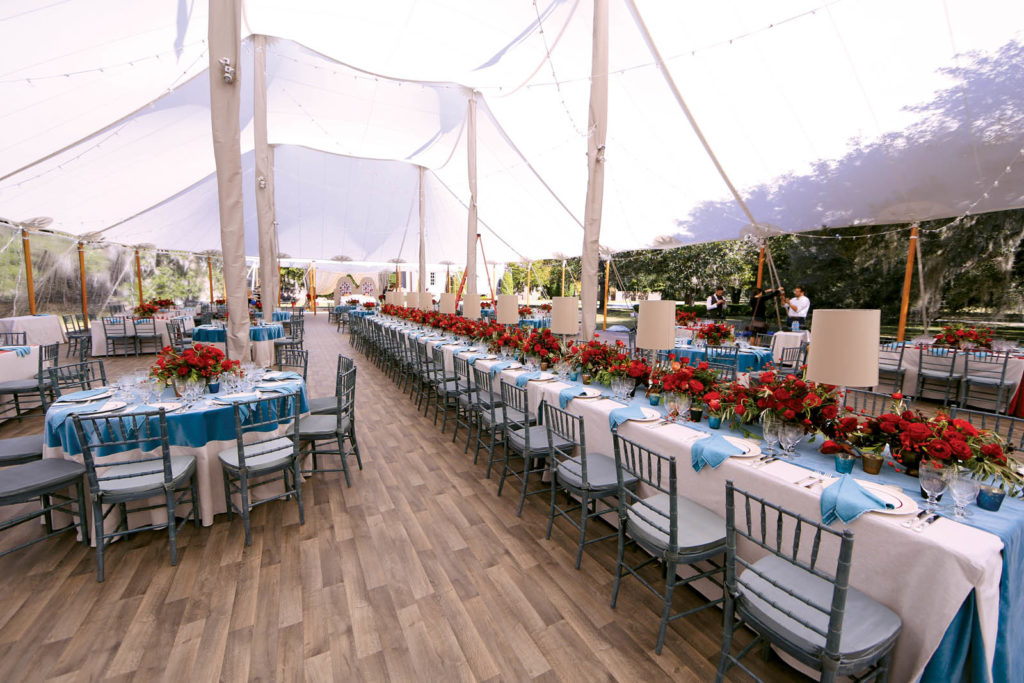
When Arnon Rosan started working in the event industry some 25 years ago, flooring and staging were not top considerations for tented affairs—in fact, they were rarely considered at all.
“When I’d approach people, they’d look at us like we were speaking a different language,” says Rosan, CEO of EverBlock® Systems LLC, a New York, N.Y.-based company that produces modular flooring and building blocks. “‘Tent flooring? Why do I even need tent flooring?’ It took a solid 20-plus years until flooring became a must-have product.”
For today’s tented events, floors and stages are often “must-haves,” and drab utilitarian products are increasingly being replaced by those with more distinctive aesthetics. Even better, manufacturers are introducing products that are stronger, lighter, and faster and easier to install.
“Now it’s not just about a gray floor where you can see the clips and the connectors and the cam locks,” Rosan says. “Now it’s about, ‘Let’s make this floor beautiful.’”
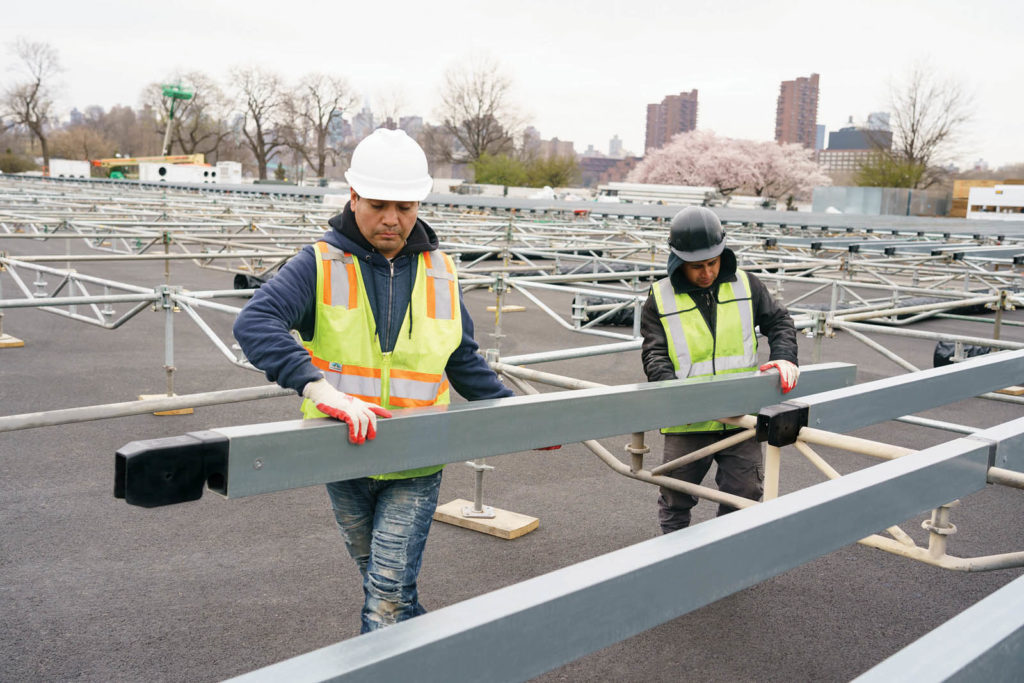
One thing that hasn’t changed is that clients holding tented events don’t always understand the need for flooring and its additional expense, at least at first.
“It’s necessary because half the time the space where the tent needs to go is not level, or it’s slightly sloped,” says Anthony Karabetyan, president of Chic Event Rentals, Castroville, Calif. “A space can become a swamp if it rains.”
Karabetyan describes a common scenario: “You go out there and say, ‘I know this is a beautiful concrete or stone terrace you see, but you see that drain in the middle? Water is going to hit the top of the tent, go down the sides and then start coming underneath. So unless you have a floor, you’re going to be stepping in water.’”
In addition, flooring is often necessary for an event in the United States to be compliant with the Americans with Disabilities Act (ADA). Any event open to the public must be ADA compliant, and one of the most common ADA-related issues that tent rental companies encounter is unlevel surfaces.
“Those with wheelchairs, canes or walkers should be able to traverse each event and access all the activities,” says Robert Van Wart, director of sales for flooring manufacturer Signature Systems Group LLC, Flower Mound, Texas. “The law states that pathways must be 36 inches wide at a minimum, and elevations greater than a quarter of an inch must have a beveled slope that takes into account height and length. Rental companies need to focus on [flooring] systems that help them meet the standards and allow efficiency in the setup.”

From simple to stunning
Once the need for flooring has been established, tented event clients have plenty of options to choose from, including colors and wood-grain patterns.
“We have basic floors where you need to put something on top, artificial turf or carpet, if you’re doing a nice event,” Karabetyan says. “But our newest floor is laminate. It looks and feels like wood; plus it goes up and down easily, and works really well for even nicer events.”
Billy McKee, vice president and general manager for 12 By Event Flooring, a Baltimore, Md.-based company that offers both sales and installation services, says that roll vinyl that creates a floor with a wood-grain design has become a viable alternative to actual wood or laminates for event flooring—so much so that it’s one of the hottest products his company offers.
“One of the biggest looks in tented events right now is farm tables and sailcloth tents,” he says. “People have been buying real wood flooring for those to get the barn look, but it’s pretty costly. Roll vinyl is quicker to install, more efficient and cost-effective.” (See the sidebar below for an installation tip.)
Still, the market for simple flooring in basic colors remains strong. Not everyone wants or needs a fancy floor, according to McKee.
“Our entry-level workhorse flooring is basic black artificial turf,” he says. “We’ve been using it for years and sell more of it than anything.”
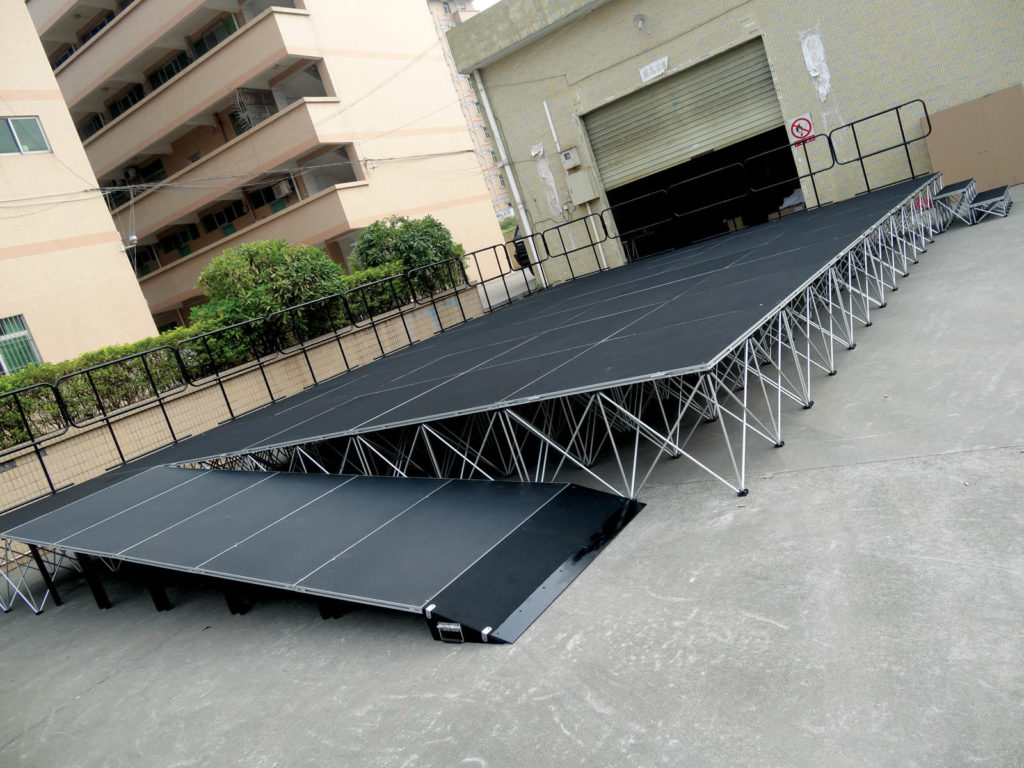
Easy does it
Beyond aesthetics, manufacturers are introducing flooring and staging products for tented events that are lighter, which makes them easier to transport and install, and at the same time stronger than products of the past.
“Efficiency is a needle mover in the space,” Signature’s Van Wart says. “Flooring and staging systems that can be easily transported and stored offer the greatest value.”
Signature’s RoverDeck™, a new product for 2019, is a lightweight rolled plastic system in different lengths and widths designed to be deployed as a temporary road when labor and time is limited, Van Wart says. “[When it’s] deployed over grass, turf, sand, gravel or any sensitive surface, people can access a site with ease,” he says. “No one wants to spend half their time trying to get the stuff off the truck.”
When recommending a new product as an inventory investment, it’s important for flooring manufacturers to understand the capabilities and limitations of their tent rental business customers. “Understanding the vehicles in their fleet, warehouse and manpower capabilities are critically important in becoming a credible flooring or staging partner,” Rosan says.
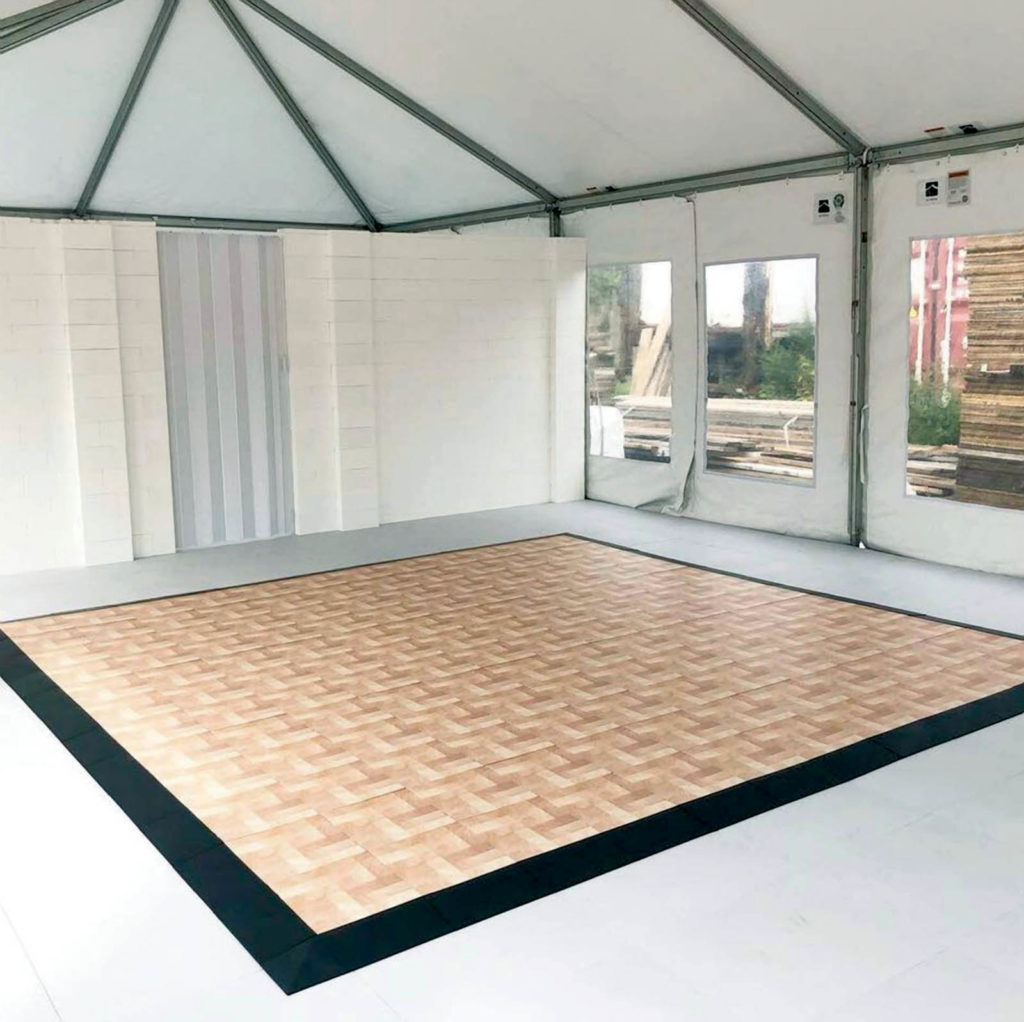
Heavy-duty flooring systems tend to require two people to handle and position large panels during installation, he adds. “Lighter weight systems tend to be transportable and installable by one person, which may be useful during busy times of the year, where staff is at a premium.”
Some newly introduced products also keep the health and wellness of the installer in mind. In January, Dura-Trac Flooring Ltd., a Kearneysville, W.V., company that manufactures event flooring, introduced the Atlys BEAMM™, a fiber-reinforced polymer beam to replace the wood beams that are usually used in lay-down scaffold flooring applications.
“It supports 150 pounds per square foot, which is unheard of,” says Mark Cerasi, Dura-Trac’s founder and owner, and requires only an installation of 24 inches on center, instead of the traditional 12 inches, to achieve the same results. But what is key for installers, he says, is that the Atlys BEAMM weighs 25 pounds, less than half the weight of an equivalent wood beam.
“People don’t think about this often enough, but when you go lighter, it really lessens the wear and tear on the bodies of the people who have to carry and install these,” Cerasi says. “Sometimes there is more concern for the grass than the guy carrying the products across the grass. We really wanted to lessen the impact on those people.”
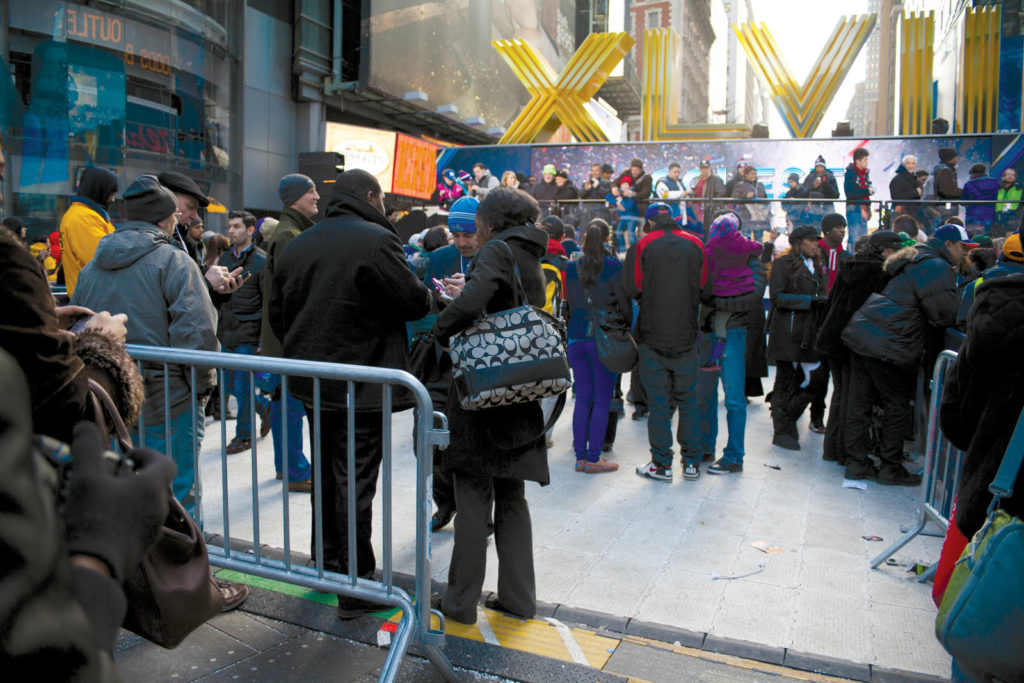
Solid investment or overkill?
While great features for efficient transportation and installation and a high-end professional look are important, safety should be the first consideration for flooring products.
“For us, it always starts with safety, for customers and employees alike,” says Van Wart. “Deciding on what flooring or staging systems are going to be stable and secure for guests to stand, walk or even dance on should be a priority.”
Understanding the scope of an event is key for choosing the right product, especially when it comes to staging. “Risers can add height to a stage, but is it really necessary for the types of events that will largely use it?” Van Wart says. “Offering guidance on weight capacity can help in the coordination of people and setup. For an event floor, panels that employees can easily install will allow for a safe deployment, but also a better outlook on getting the job done in an efficient manner. The surface that the floor sits on should be considered and prepped for installation, if necessary, to ensure a seamless and safe environment for guests.”
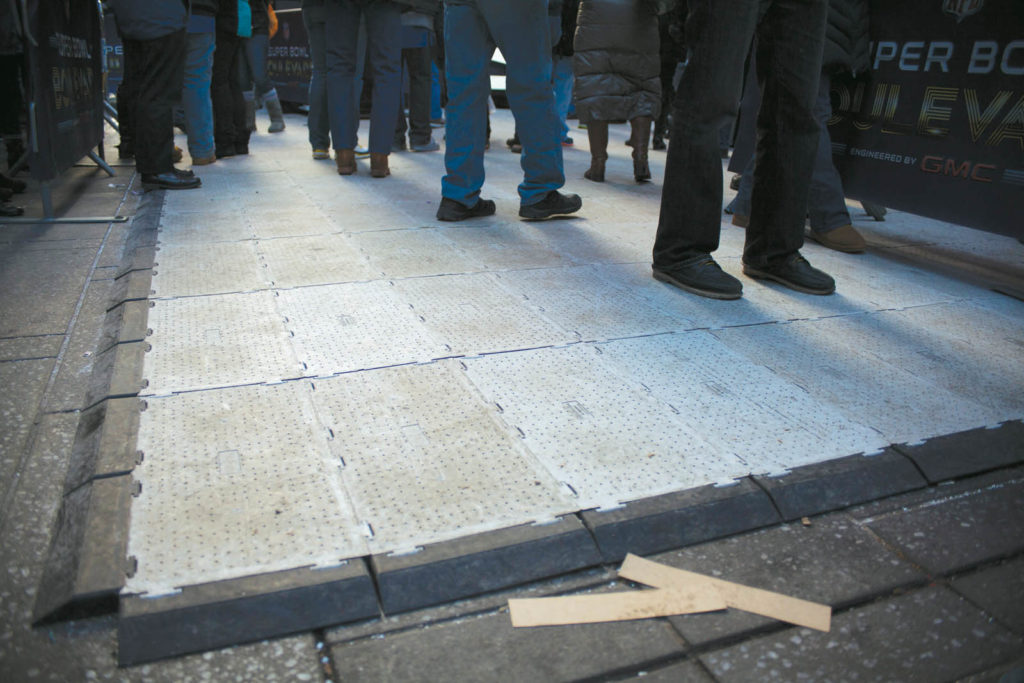
All of these considerations make it more important than ever for manufacturers or dealers that cater to the rental market to spend time making sure their customers choose the right system for their crews and clientele.
“For some, doing basic events that require speed and efficiency, tool-less flooring systems like our UltraDeck®, where the panels are snapped into place, make for the perfect surface,” says Van Wart. “For others who are looking for floors that are heavier-duty, such as for higher-end weddings or a major event, our ArmorDeck® offers much more flexibility.”
When considering the economics of an investment, rental companies should consider the surface finish of the flooring as well, Rosan says. “Will you need to cover the floor with another finish, such as carpet or vinyl? If so, it’s important to consider this when pricing out the flooring, to think about the true investment. Some floors offer a more finished look that doesn’t need to be covered, while other floor systems look industrial and could only be used for more casual or industrial applications.”
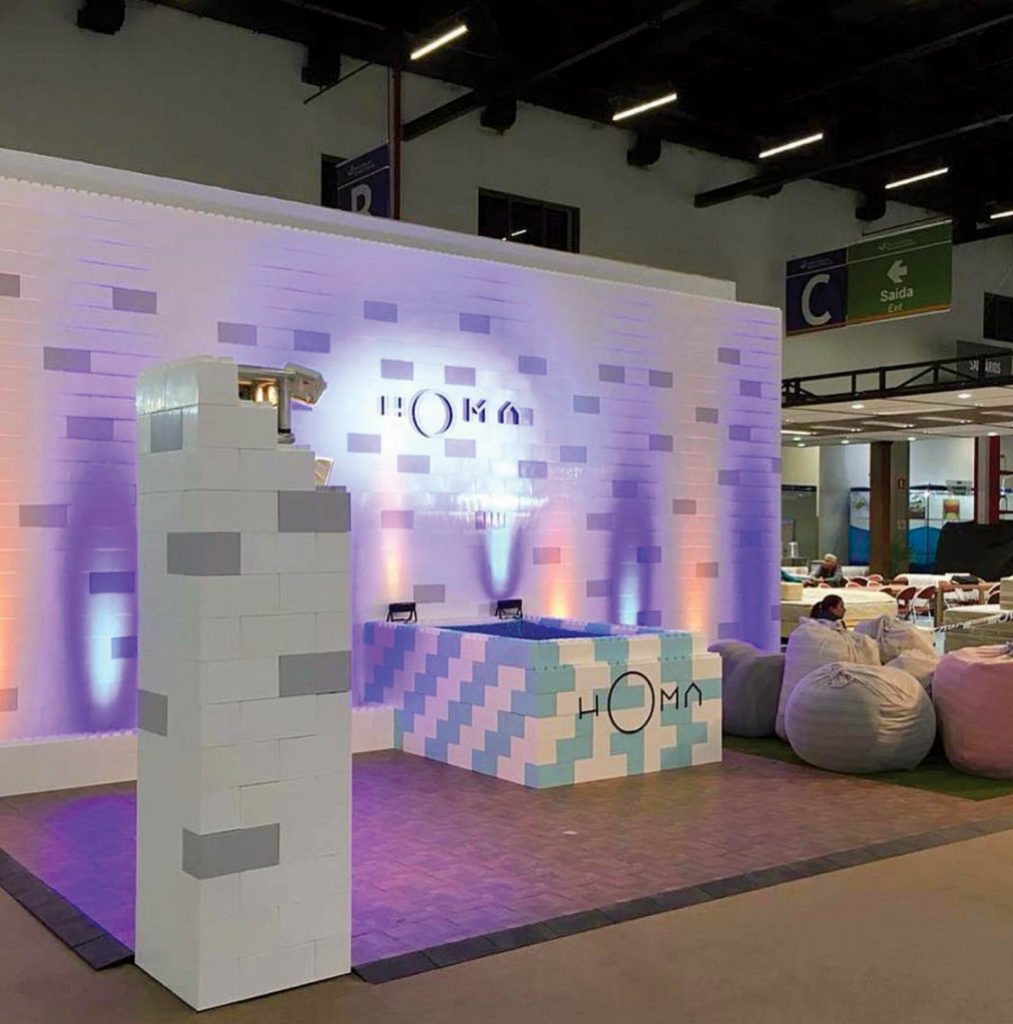
It’s easy for rental companies to “get caught up in more expensive systems that offer perfectly rigid floors,” Rosan adds. “Those types of systems may not be appropriate for a small or medium-size rental company that does many installs on level lawns or asphalt parking lots.
“Rental companies should think about the return on investment,” Rosan explains. “Lighter weight flooring systems tend to have much higher ROI due to the rental rates versus the purchase cost of the system. Stagelike floors tend to be expensive, and while they provide a fantastic feel underfoot, they may be overkill for many projects.”
Jeff Moravec is a freelance writer based in Minneapolis, Minn.
Billy McKee, vice president and general manager for 12 By Event Flooring, admits that roll vinyl has a “bit of a stigma.” Because it was originally designed to be glued down in commercial installations, its use in tented events can be problematic as it is sometimes installed using staples or tape.
“The vinyl is affected by temperature swings,” McKee says. “It expands and contracts, so you hear some horror stories in the industry. It’s hot in the tent when it’s installed, and when the air conditioning gets turned on, it warps.”
McKee, however, has a solution. “It’s a method we’ve been trying to teach whether someone buys the roll vinyl from me or not, because we can’t have people saying it’s not a viable option.”
Here’s how it works:
“We get some plastic sheeting like Visqueen and cut 6-inch-wide strips,” McKee
says. “We install the roll vinyl with 2-inch double-sided carpet tape. But instead of sticking one side to the subfloor and the other side to the bottom of the roll vinyl, we put the plastic sheeting down first, stick the bottom of the tape to the plastic sheeting sitting on top of the subfloor. We don’t stick it to the subfloor. Then the top side of the tape is applied directly to the vinyl.
“You have a seam that won’t come apart. When you get temperature swings, the whole seam will just slide, moving on the floor. It doesn’t pucker up or come apart. It’s a nice look and if you install it right, it’s a real viable product.”
 TEXTILES.ORG
TEXTILES.ORG


